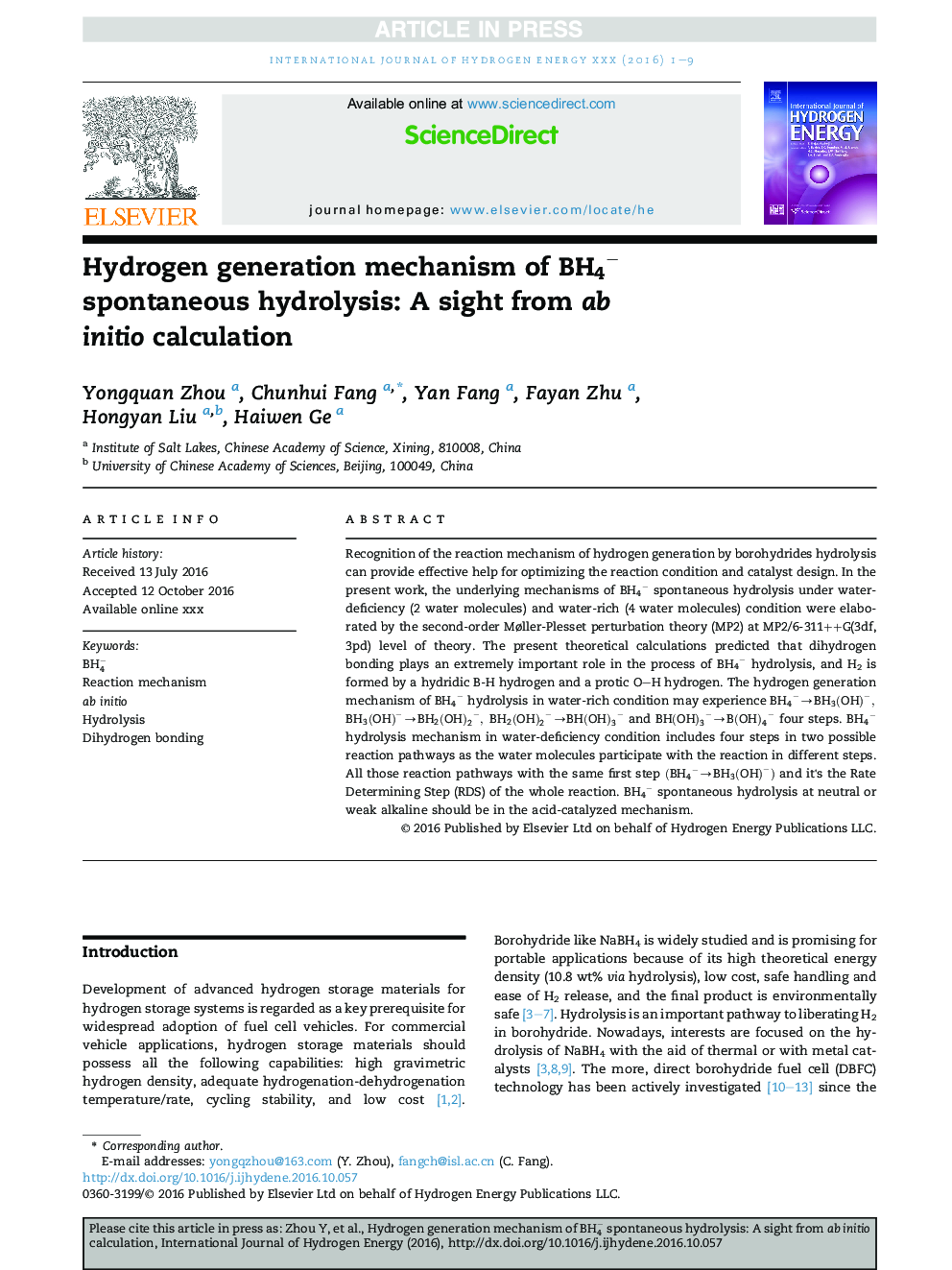| Article ID | Journal | Published Year | Pages | File Type |
|---|---|---|---|---|
| 5145788 | International Journal of Hydrogen Energy | 2016 | 9 Pages |
Abstract
Recognition of the reaction mechanism of hydrogen generation by borohydrides hydrolysis can provide effective help for optimizing the reaction condition and catalyst design. In the present work, the underlying mechanisms of BH4â spontaneous hydrolysis under water-deficiency (2 water molecules) and water-rich (4 water molecules) condition were elaborated by the second-order Møller-Plesset perturbation theory (MP2) at MP2/6-311++G(3df, 3pd) level of theory. The present theoretical calculations predicted that dihydrogen bonding plays an extremely important role in the process of BH4â hydrolysis, and H2 is formed by a hydridic B-H hydrogen and a protic OH hydrogen. The hydrogen generation mechanism of BH4â hydrolysis in water-rich condition may experience BH4ââBH3(OH)â, BH3(OH)ââBH2(OH)2â, BH2(OH)2ââBH(OH)3â and BH(OH)3ââB(OH)4â four steps. BH4â hydrolysis mechanism in water-deficiency condition includes four steps in two possible reaction pathways as the water molecules participate with the reaction in different steps. All those reaction pathways with the same first step (BH4ââBH3(OH)â) and it's the Rate Determining Step (RDS) of the whole reaction. BH4â spontaneous hydrolysis at neutral or weak alkaline should be in the acid-catalyzed mechanism.
Related Topics
Physical Sciences and Engineering
Chemistry
Electrochemistry
Authors
Yongquan Zhou, Chunhui Fang, Yan Fang, Fayan Zhu, Hongyan Liu, Haiwen Ge,
